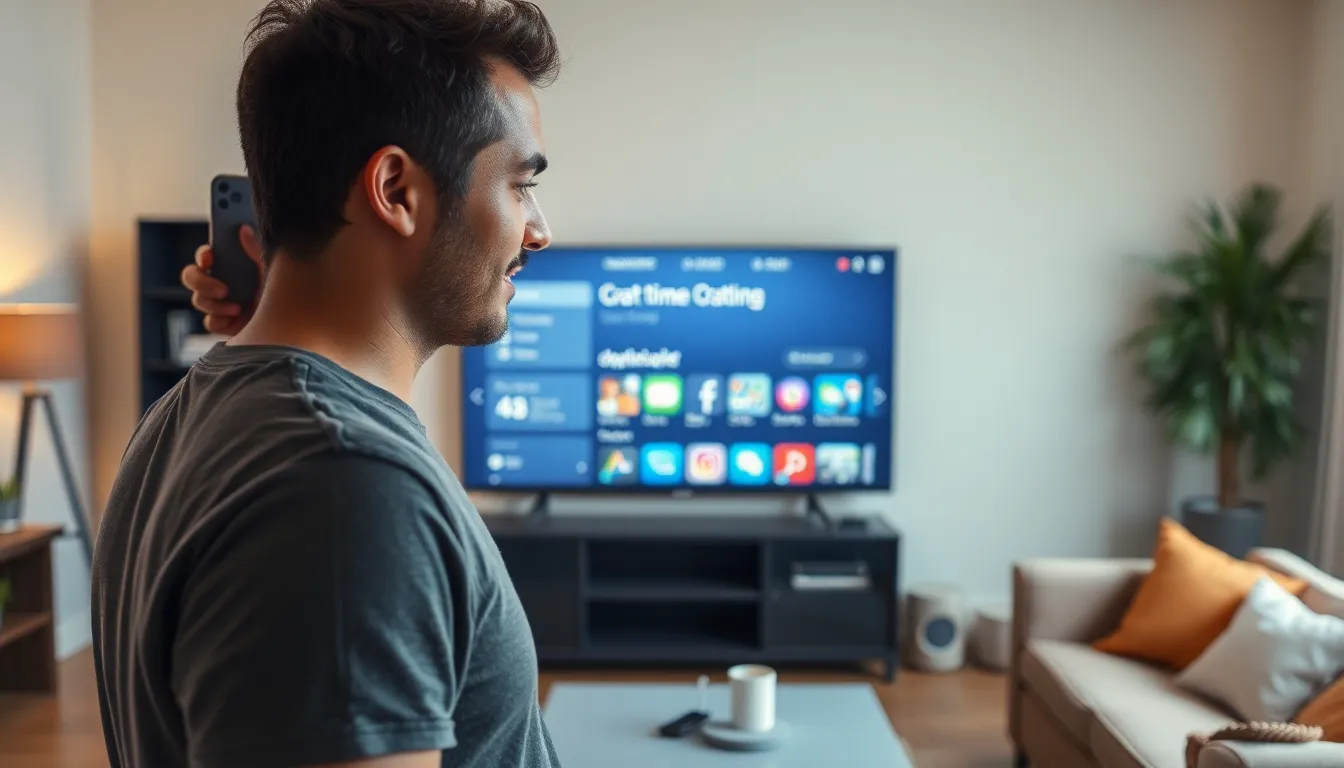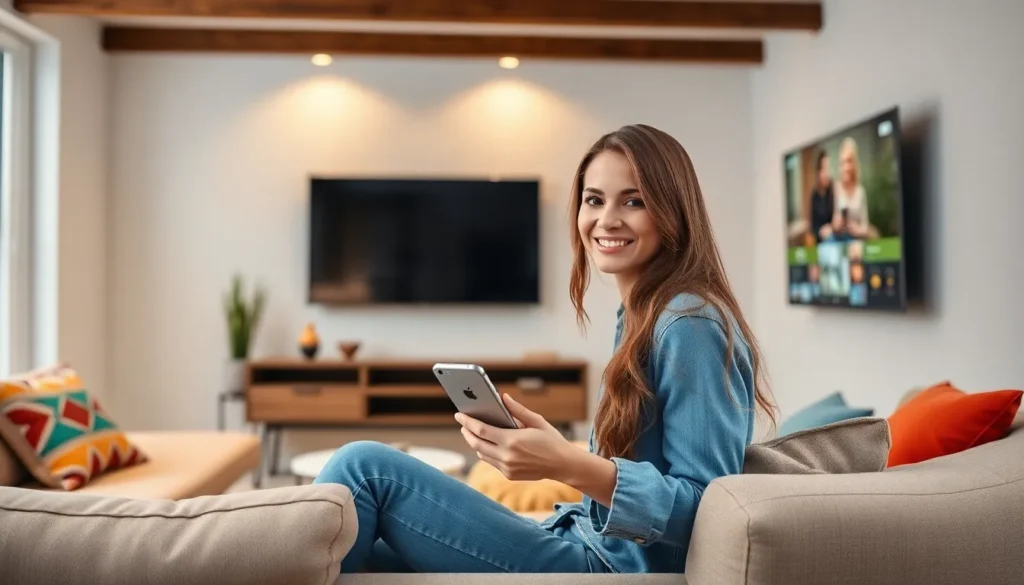Table of Contents
ToggleEver found yourself squinting at your iPhone screen while trying to watch the latest episode of your favorite show? It’s like trying to read a novel with a magnifying glass. Luckily, there’s a way to ditch the tiny screen and bring the action to your TV. Casting from your iPhone to your television can transform your living room into a mini theater, minus the overpriced popcorn.
Understanding Casting
Casting involves wirelessly transmitting content from a device, like an iPhone, to a TV. This method enhances the viewing experience by making it more immersive and convenient.
What Is Casting?
Casting refers to the technology that allows users to display media from their smartphone or tablet on a larger screen. Devices like Apple TV and Chromecast enable this feature by establishing a connection between the iPhone and the TV. Users can select videos, music, or photos on their iPhone and send them directly to their television with a few taps. This seamless interaction ensures that accessing content becomes effortless.
Benefits of Casting to Your TV
Casting to a TV offers several advantages. First, it enhances the viewing experience by providing a larger screen for better visibility. Second, it allows for a more comfortable and social environment, perfect for sharing videos with family and friends. Third, casting supports a wide range of apps, making it easy to stream content from various sources. Additionally, users can control playback directly from their iPhone, ensuring convenience and simplicity while enjoying their favorite shows or movies.
Preparing Your Devices

Preparing your iPhone and TV for casting requires attention to a few important details. Checking device compatibility ensures that both your iPhone and TV support casting features.
Ensuring Compatibility
Confirming compatibility between devices is essential. iPhones running iOS 12 or later support AirPlay, so make sure the device meets this requirement. Additionally, verify that the TV supports AirPlay or is connected to compatible devices like Apple TV or Chromecast. Reviewing user manuals can help clarify compatibility. Refer to the manufacturer’s website for the latest information on supported features.
Connecting to the Same Wi-Fi Network
Connecting both devices to the same Wi-Fi network is crucial for a successful casting experience. Access the Wi-Fi settings on your iPhone and ensure it connects to the same network as your TV. For TVs, navigate to the settings menu to check the network connection. If using smart TVs, make sure the TV app supports casting functions. Restarting both devices may help in establishing a smooth connection. Keeping devices updated contributes to improved performance during casting.
Casting Methods for iPhone
Casting content from an iPhone to a TV can occur through various methods. Understanding these methods improves the viewing experience efficiently.
Using AirPlay
AirPlay provides a seamless way to cast content. Users can access AirPlay from the Control Center by swiping down from the top right corner of their screen. Selecting the “Screen Mirroring” option appears after connecting to the same Wi-Fi network as the TV. Compatible devices appear on the list for selection. Once a device is chosen, users may enter an AirPlay passcode if prompted. Content displays on the TV instantly, ensuring an immersive viewing experience.
Using Third-party Apps
Third-party apps offer additional casting options when using an iPhone. Popular apps include Google Home, YouTube, and Netflix. Each app contains its own casting feature typically found in the video player’s interface. Users tap the cast icon to connect to their respective devices. Casting via these apps often provides access to specific content types, enhancing compatibility with a variety of entertainment sources. Checking app permissions and network connections ensures a smooth experience.
Troubleshooting Casting Issues
Casting issues may arise during the process from iPhone to TV. Identifying common problems and knowing how to resolve them makes for a smoother experience.
Common Problems and Solutions
Network connectivity often causes the most issues. Ensure both iPhone and TV connect to the same Wi-Fi network. If the connection seems slow, consider restarting the router. A lack of device compatibility can also create problems. Verify that both devices support casting methods like AirPlay. An incorrect passcode during AirPlay setup may interrupt the process. Double-check that you enter the right passcode when prompted. For app-related issues, ensure permissions are granted for casting. Sometimes, simply updating apps resolves unexpected bugs.
When to Seek Help
Persistent casting problems may necessitate professional support. If basic troubleshooting doesn’t solve the problem, consider reaching out to customer service. Utilize manufacturer resources for additional compatibility details. Some users report problems unique to specific models or brands; contacting the manufacturer can clarify these issues. Community forums also serve as valuable resources for shared experiences and solutions. Common advice includes exchanging devices for compatibility checks if casting issues persist for a particular TV or setup.
Casting from an iPhone to a TV transforms the way users enjoy their favorite content. By following the outlined steps and ensuring device compatibility, anyone can create a more engaging viewing experience. Whether it’s for a movie night or sharing videos with friends, the convenience of casting makes it easy to enjoy media on a larger screen.
With the right tools and a few simple adjustments, users can overcome common challenges and enhance their entertainment setup at home. Embracing this technology not only elevates the viewing experience but also brings everyone together for shared moments of enjoyment.




